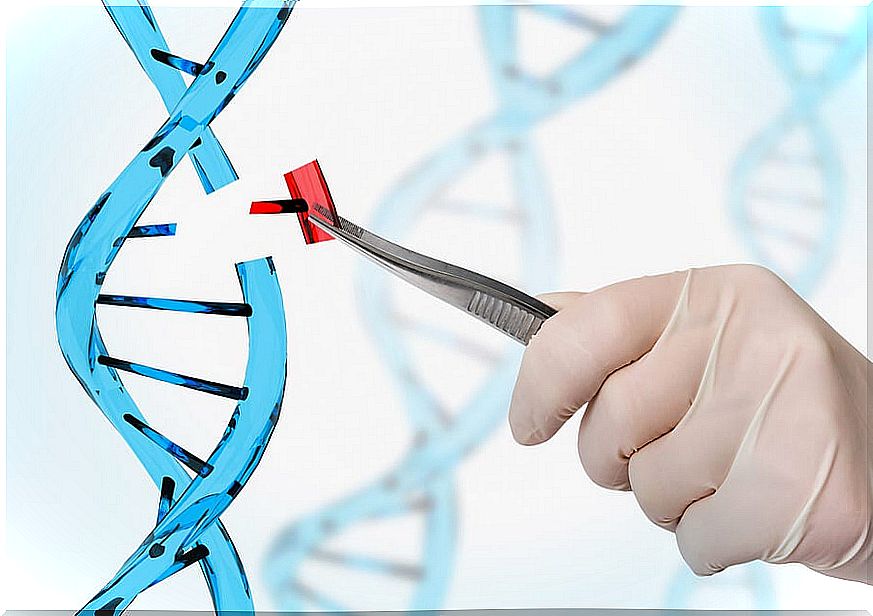Gene Therapy For The Heart, What Does It Consist Of?
Gene therapy for the heart is one of the most relevant advances in current medicine. It forms a new treatment strategy for heart failure. In recent years, research on it has increased dramatically.
Gene therapy consists of transferring genetic material into the cells of an individual. The idea is to restore a cell function that is defective or introduce a new function.
Gene therapy for the heart seeks to stimulate the formation of blood vessels. This could help prevent myocardial infarctions or angina pectoris, which are pathologies with a high incidence and mortality today.
Therefore, due to its importance, in this article we explain what gene therapy for the heart consists of.
Heart failure

Heart failure is when the heart stops pumping blood efficiently. Therefore, oxygenated blood does not reach all areas of the body correctly.
Despite all the pharmacological advances, it is a pathology that affects more people every day. Heart failure can be due to coronary artery disease, high blood pressure, infections, and so on.
Although there are many possible causes, the result at the cellular level is the same. In the cells of the heart (myocytes) certain genetic changes occur. The contractile proteins of these cells are altered.
This makes it possible that, by means of gene therapy for the heart, a treatment can be established. The idea is to alter the genetics of these cells. Thus, it is attempted that the proteins are re-expressed in a normal way.
Gene therapy for the heart
As we have mentioned, gene therapy consists of inserting a gene into a human cell. The idea is to be able to treat a disease. This can be done in pathologies based on a genetic defect, such as some hereditary diseases (eg hypertrophic cardiomyopathy).
But, on the other hand, it can also be used for certain diseases in which genes are not expressed correctly. In heart failure, the expression of certain proteins has been shown to decrease in heart cells.
This is what leads to the heart becoming hypertrophied. That is, the heart grows too large and cannot maintain its function. Therefore, it is unable to efficiently carry blood to all parts of the body.
Gene therapy for the heart can also be aimed at regenerating the heart after a heart attack. In this case, it is about “regenerating” the tissue. For this, the multiplication of cells is stimulated.
So what is gene therapy for the heart?

Recently, researchers at a New York hospital have tested a gene therapy for the heart that helps it regenerate after a heart attack. They have done it in animals, but the idea is that it can soon be used in people.
The Mount Sinai Hospital team observed that some animals regenerate their hearts after damage. For example, salamanders are capable of multiplying the cells of their heart muscle.
In humans, when heart tissue is injured, fibrous tissue is created. That is, a scar is formed where the injury was, which is not able to beat.
However, if the cells of our heart could multiply, it could regenerate and beat normally after a heart attack. The gene that is related to this ability to multiply is called cyclin A2.
These scientists demonstrated that, after injecting this gene into some animals after a heart attack, six weeks later new cells with the capacity to contract had formed. This is a type of gene therapy for the heart.
Furthermore, after this, it was shown that the contraction force of the heart had increased. Which indicated that, after gene therapy for the heart, they had managed to get the heart to pump blood correctly again after a myocardial infarction.
In conclusion
Gene therapy for the heart represents a very promising future for medicine. With these investigations, it has been shown that, by injecting certain genes, the heart can repair itself after a heart attack or in the case of heart failure.
Therefore, it is important to promote research. In short, all these types of treatments may help us in the future to improve our quality and life expectancy.









